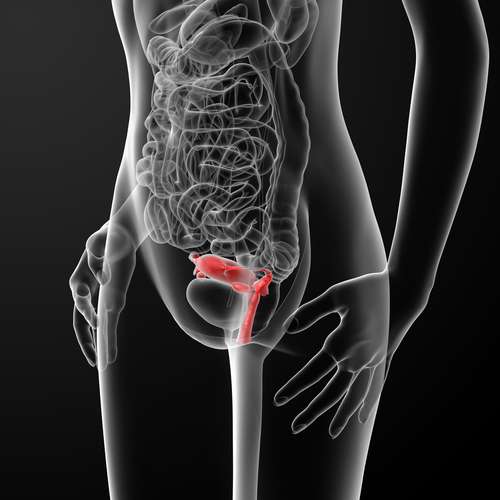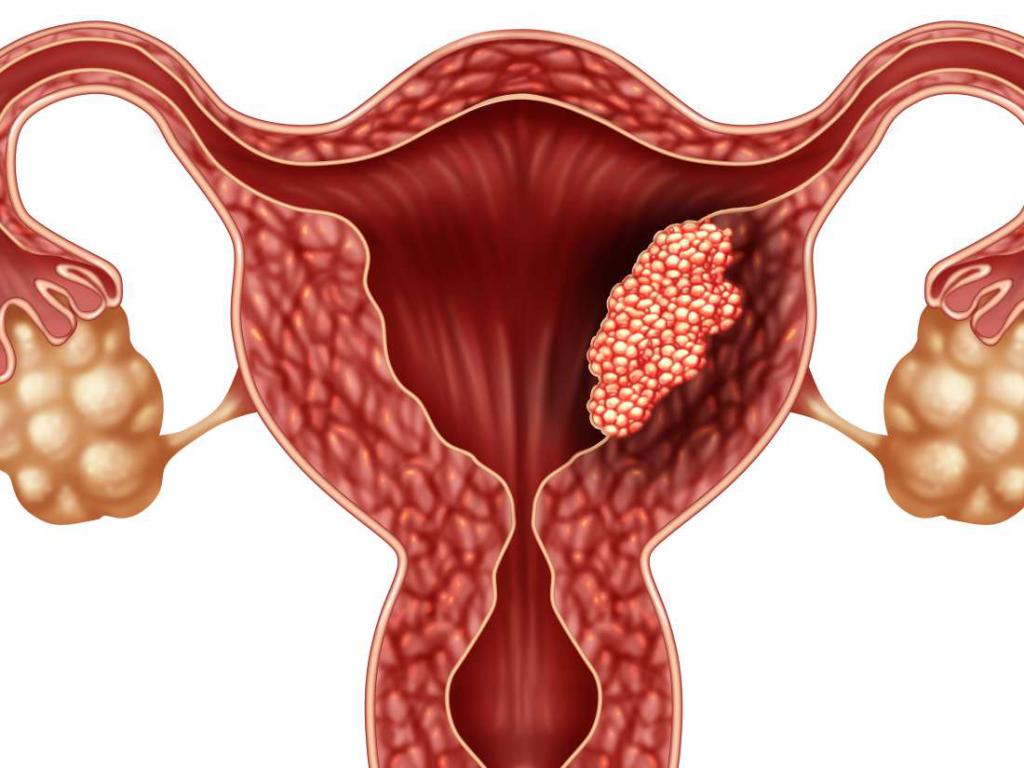Hypermenstrual syndrome is a very common problem that many women face. For one reason or another, the volume of discharge during menstruation increases, sometimes up to the development of serious bleeding. Many patients are interested in additional information about this pathology, so they are worth considering.
Hypermenstrual syndrome: what is it? general information

Many women face a similar problem and, accordingly, are interested in additional information. Hypermenstrual syndrome (ICD-10 code N92.0) is a disorder that is accompanied by an increase in the amount of spotting. Moreover, according to statistics, menstruation in this case lasts longer than seven days. Nevertheless, all this happens during menstruation, bleeding between these periods is not observed, and women feel quite normal.
The main causes of the development of pathology

Hypermenstrual syndrome is not an independent disease, in most cases it is only a symptom of another pathology. The causes of the syndrome can be very different and you should definitely familiarize yourself with their list:
- Sometimes abundant periods indicate the presence of inflammatory processes in the uterus and ovaries. In turn, inflammation, as a rule, is the result of the activity of pathogenic microflora, therefore, infectious diseases that are transmitted sexually must be attributed to risk factors.
- Hypermenstrual syndrome is often the result of pathologies from the endocrine system.
- Risk factors include injuries, as well as previously transferred surgical operations on the pelvic organs.
- There is such a thing as iatrogenic hypermenstrual syndrome. In this case, the reason is the incorrect use of anticoagulants, estrogens, hormonal contraceptives.
- Hypermenstrual syndrome can be the result of organic lesions of the ovaries and uterus. For example, profuse discharge and bleeding during menstruation may indicate the presence of benign tumors of the uterus, endometriosis, hyperplastic processes, such as, for example, the formation of endometrial polyps, the development of glandular hyperplasia. The reasons also include hormone-active tumors in the ovary area, as well as the presence of malignant processes in the tissues of the cervix and uterine body.
- Among the causes include infectious and somatic diseases, severe forms of intoxication.
- The possibility of the patient having hematological diseases, in particular leukemia, hemorrhagic diathesis, thrombocytopenia, cannot be ruled out.
In any case, it is very important to determine the cause of hypermenstrual syndrome - the correct treatment depends on it.
Risk factors: what could aggravate the situation?
We have already examined the main causes of hypermenstrual syndrome. However, there are factors whose presence / impact can exacerbate the situation.
For example, it’s no secret to anyone that nervous and emotional overstrain directly affect hormone levels. Constant stresses can aggravate the situation, affect the menstrual cycle.
Risk factors also include:
- living in adverse conditions (e.g. contaminated environment);
- smoking and other bad habits;
- dramatic climate change;
- improper nutrition (for example, strict diets are often accompanied by vitamin deficiencies).
What symptoms should I look for?

It is immediately worth noting that the sooner a woman seeks help from a doctor, the easier it is to correct the situation and avoid negative consequences. Hypermenstrual syndrome is characterized by prolonged menstruation: they last longer than seven, but less than twelve days.
The volume of menstrual flow increases sharply. They say about pathology if, during the monthly cycle, the patient loses at least 200-250 ml of blood. As a rule, women during a reception with a gynecologist complain that sanitary pads during menstruation have to be changed almost every hour. Nevertheless, cyclicality persists, that is, menstruation is repeated with a certain periodicity. Algodismenorrhea is sometimes observed when menstruation is accompanied by severe pulling pains in the lower abdomen (sometimes unpleasant sensations are so pronounced that patients lose consciousness).
What forms can pathology take?

Hypermenstrual syndrome, DMC (dysfunctional uterine bleeding), is a very common disorder. Naturally, such a pathology can take various forms, and their features are worth familiarizing with:
- Hyperpolymenorrhea is characterized by prolonged, profuse discharge.
- Menorrhagia is a pathology that is accompanied by the appearance of uterine bleeding, but only during menstruation.
- Metrorrhagia is accompanied by the appearance of spotting and even bleeding outside the period of menstruation.
- Menometorrhagia is a pathology characterized by the appearance of bleeding both during menstruation and in periods between menstruation.
- Acyclic bleeding is characterized by a lack of periodicity: spotting appears spontaneously, it is impossible to predict such a phenomenon.
This is what the classification system established by doctors looks like. Hypermenstrual syndrome can take many forms, accompanied by additional symptoms (for example, abdominal pain, weakness, dizziness). In any case, it is dangerous to ignore the problem, it is best to consult a gynecologist as soon as possible.
Possible complications

Sometimes hypermenstrual syndrome indicates the presence of very serious diseases, which, in the absence of therapy, can lead to dangerous disorders from different organ systems.
If episodes of hypermenstruation are rare, then they do not pose a particular health hazard. However, constant blood loss can lead to iron deficiency anemia. Often women complain of severe shortness of breath, constant dizziness, severe weakness.
Diagnostic measures
Treatment of hypermenstrual syndrome largely depends on the causes of its occurrence. That is why, in the presence of a similar problem, the correct diagnosis is so important. During the examination, the doctor will collect information about the presence of malfunctions in the menstrual cycle, the appearance of certain violations from other organ systems.

During a gynecological examination, it is possible to determine the presence of inflammatory diseases of the organs of the reproductive system. A pelvic ultrasound is mandatory, this helps to assess the condition of the uterus and ovaries. Samples are taken from the vagina and cervix with further bacteriological examination, which makes it possible to detect infectious diseases. Informative is PCR diagnostics, as well as an analysis of the level of sex hormones and thyroid hormones.
A biochemical blood test helps determine the presence of iron deficiency anemia. A study is conducted on the coagulation rate of blood. Sometimes diagnostic curettage is prescribed with further histological examination, as well as hysteroscopy.
The basic principles of therapy
It should be understood that the treatment of hypermenstrual syndrome directly depends on the causes of the appearance of the pathology. Naturally, the presence of concomitant problems and complications (for example, anemia) should be taken into account.
If hypermenstrual syndrome has developed against a background of hormonal imbalance (in particular, changes in the level of sex hormones), then hormones are prescribed to patients (oral contraceptives are effective in this case). Intrauterine devices and hormonal contraceptive rings are used for adenomyosis and some other pathologies of the reproductive organs.
If uterine fibromyoma occurs, then the doctor, after a thorough diagnosis, can prescribe an operation. In the presence of multiple and growing polyps in the uterus, surgical removal is also required.
Of course, you need to pay attention to the patient's condition. It is important to normalize nutrition, sleep and rest, learn to cope with stress. Patients are also prescribed vitamin complexes (in particular, folic and ascorbic acid) and iron preparations for the prevention of iron deficiency anemia.
If we are talking about symptomatic therapy, then in the most severe cases, doctors recommend taking hemostatic drugs, in particular drugs, which include tranexamic acid, dicinone.
Is there an effective prevention?

Hypermenstrual syndrome is not an independent disease. Its appearance indicates pathologies from the reproductive and / or endocrine system. There is no specific prophylaxis. Doctors can only recommend women to undergo gynecological examinations twice a year, even if there are no obvious violations. It is extremely important to keep a calendar of menstruation, and when the slightest malfunction occurs, consult a specialist.